Phuket Island is well-known for its stunning beaches, crystal-clear waters, and lush tropical forests. But did you know that this beautiful island is also a paradise for birds?
Phuket is home to over 100 different bird species, both resident and migratory, which thrive in the island’s diverse habitats ranging from mangroves to coconut groves.
The island’s avian population includes various species of eagles, hornbills, kingfishers, and owls, among others. Whether you’re a birdwatching enthusiast or just a nature lover, exploring Phuket’s vibrant birdlife is a must-do activity during your trip to this idyllic island.
1. Lesser Whistling Duck
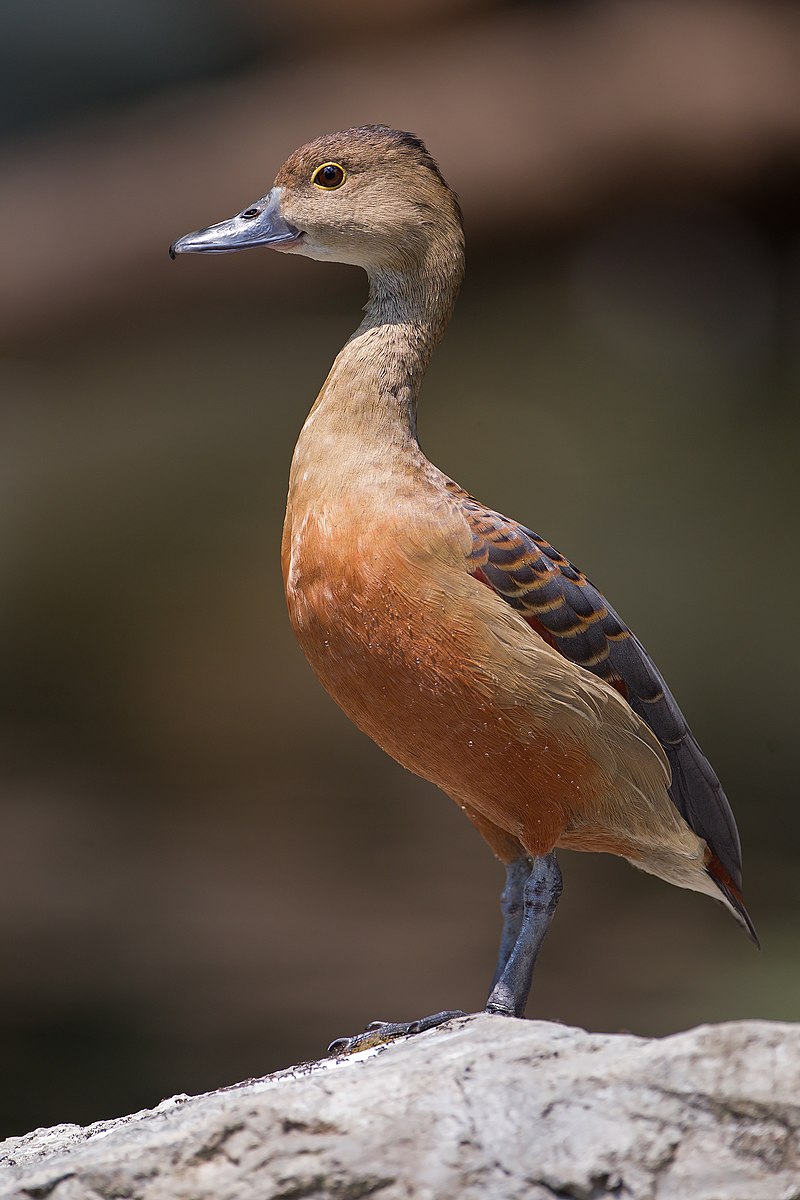
The Lesser Whistling Duck is a species of whistling duck found in the Indian subcontinent and Southeast Asia.
It has an unmistakable appearance, with its brown body, white-streaked wings and distinctive black tail feathers.
The adult ducks have red bills, eyes and legs with yellowish webbed feet for swimming.
They are generally nocturnal feeders but during the day they can be seen around lakes or wet paddy fields in flocks perching on trees or even building their nest inside tree hollows.
Their diet mainly consists of seeds from aquatic plants as well as small fish, mollusks and insects occasionally taken while wading or diving into water bodies to find food sources.
Scientific classification:
| Kingdom | Animalia |
| Phylum | Chordata |
| Class | Aves |
| Order | Anseriformes |
| Family | Anatidae |
| Genus | Dendrocygna |
| Species | D. javanica |
Also Featured In: Most Common Birds in China, Common Birds in Kerala
2. Chinese Pond Heron
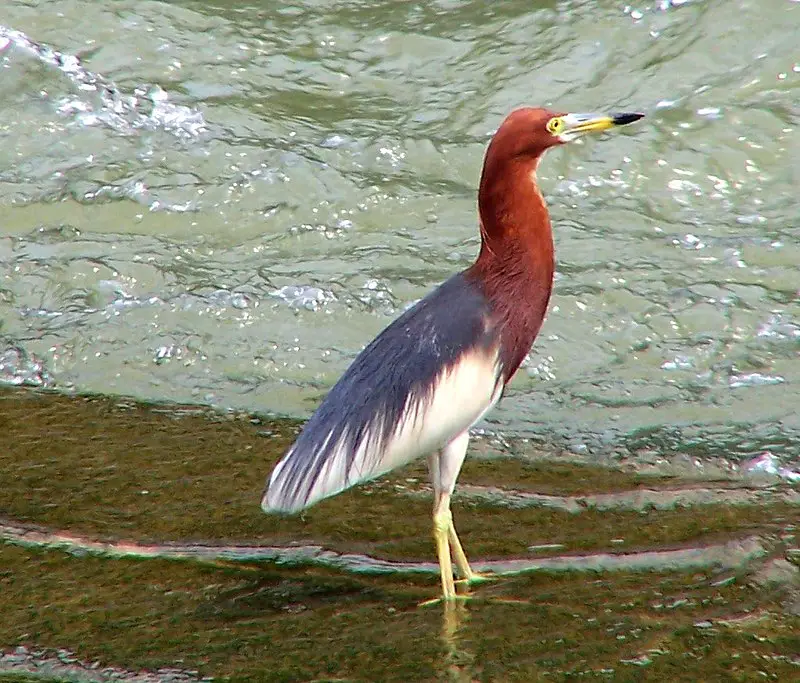
The Chinese pond heron (Ardeola bacchus) is a species of freshwater bird belonging to the heron family, Ardeidae.
It is one of six “pond herons” that inhabit East Asia and can be found in parts of China, Japan, and Korea.
This species typically inhabits shallow marshes, flooded fields, or rice paddies near rivers and streams where it feeds on small fish, frogs, insects, and other aquatic life forms.
Its plumage features white feathers with black tips creating an elegant look when perched by the water’s edge waiting for prey.
The Chinese pond heron has been known to form mixed-species flocks which include egrets as well as other wading birds such as storks; its presence adds interest to any wetland habitat they call home.
Scientific classification:
| Kingdom | Animalia |
| Phylum | Chordata |
| Class | Aves |
| Order | Pelecaniformes |
| Family | Ardeidae |
| Genus | Ardeola |
| Species | A. bacchus |
3. Indian Roller
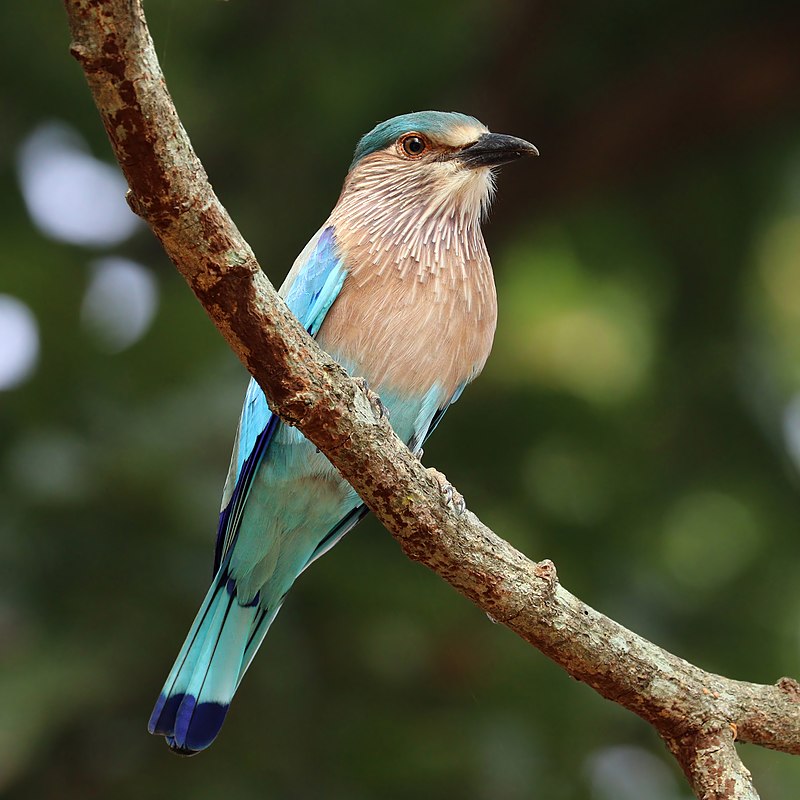
The Indian roller is a beautiful bird of the Coraciidae family. It has an average length of 12-13 inches and weighs 5.9 to 6.2 ounces with a wingspan of 26-29 inches.
Its face and throat are pinkish, while its head and back are brown with blue on its rump, light blue markings on one side of the wing, dark blue markings on other side making it easily distinguishable in flight.
Both male and female have same colouration but males tend to be slightly larger than females though they can only be differentiated when seen together closely due to similar colouring pattern between sexes.
The Indian Roller makes spectacular aerial dives from great heights during courtship display which attracts many viewers each year.
Scientific classification:
| Kingdom | Animalia |
| Phylum | Chordata |
| Class | Aves |
| Order | Coraciiformes |
| Family | Coraciidae |
| Genus | Coracias |
| Species | C. benghalensis |
Also Featured In: Common Birds in India, Birds That Live in the Jungle
4. Common Kingfisher
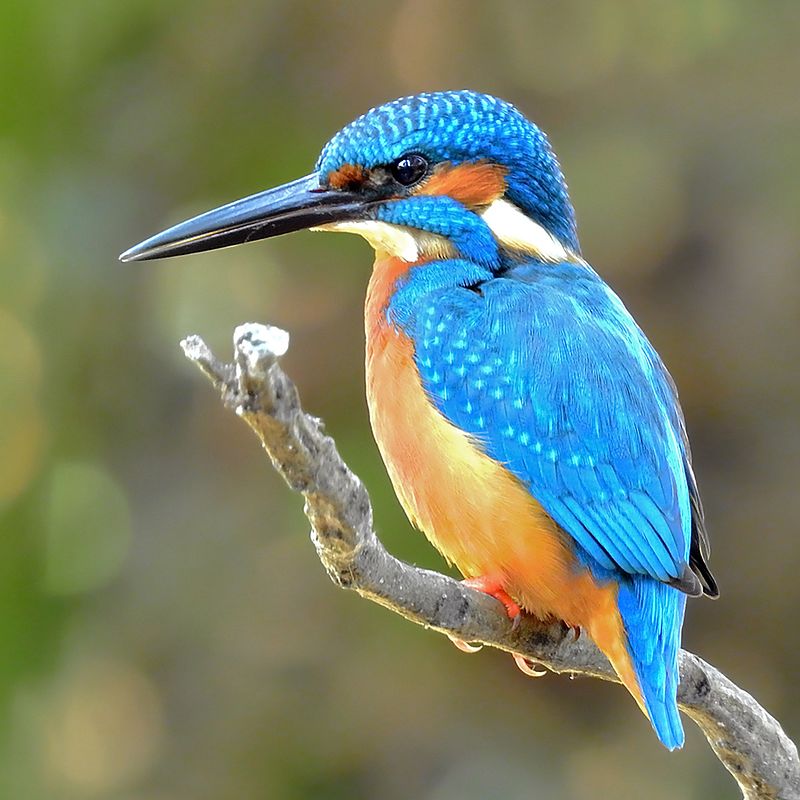
The Common Kingfisher is a small, sparrow-sized bird that can be found across Eurasia and North Africa. It has the typical short tail and large head of kingfishers with seven different subspecies recognized in its range.
They are mainly resident birds but will migrate away during winter when rivers freeze over. The species usually live near bodies of water such as streams or lakes.
Where they hunt for fish by diving from above into the water after spotting their prey below them.
These brightly coloured birds have an unmistakable vibrant blue plumage along with orange underparts and white patches on their wings which makes them easy to recognize amongst other similar looking species.
Their call is loud and shrill making it one of the most recognizable sounds heard around wetlands throughout Europe.
Scientific classification:
| Kingdom | Animalia |
| Phylum | Chordata |
| Class | Aves |
| Order | Coraciiformes |
| Family | Alcedinidae |
| Subfamily | Alcedininae |
| Genus | Alcedo |
| Species | A. atthis |
Also Featured In: Ukrainian Birds You Should Know, Most Common Romanian Birds
5. Green-Billed Malkoha
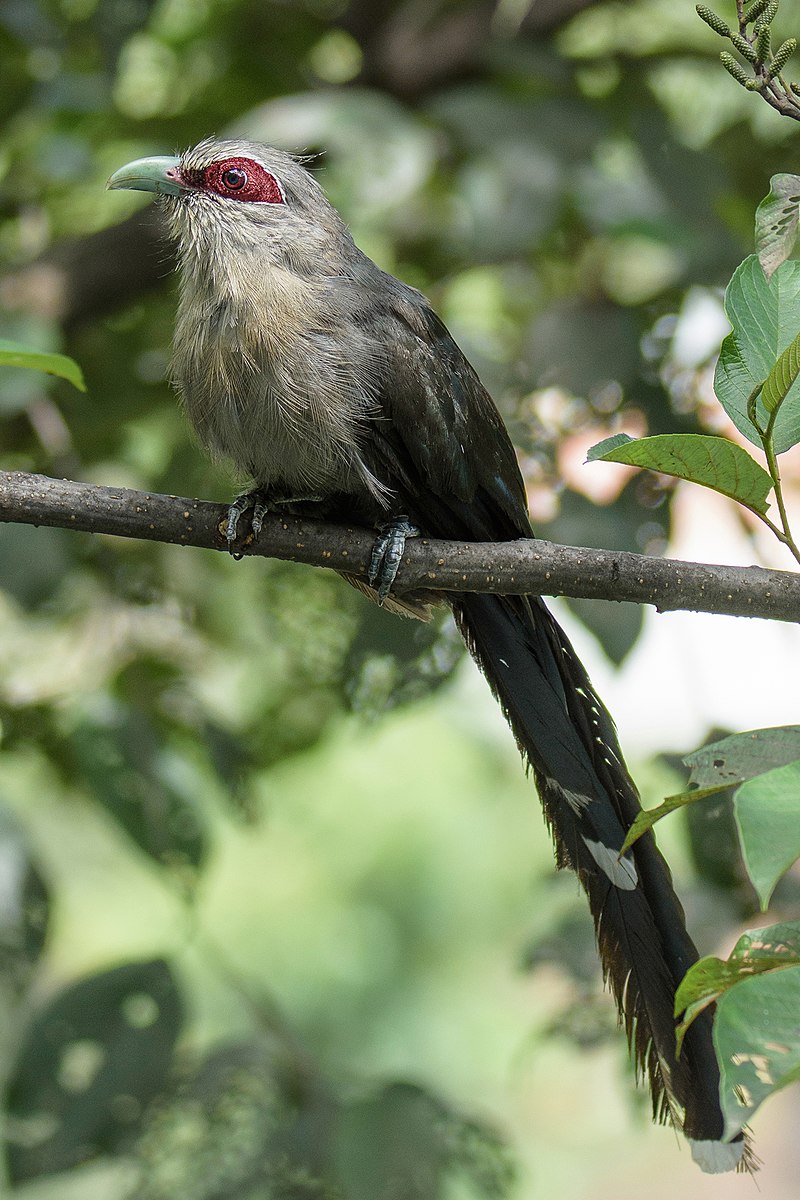
The Green-billed Malkoha is a striking bird found across the Indian Subcontinent and Southeast Asia. It measures 50 to 60 cm in length, with a waxy bluish black body and long graduated tail featuring white tips on its feathers.
The most remarkable feature of this species is its prominently curved green bill, which gives it name. These birds are usually seen in dry scrub or thin forest habitats.
They feed mainly on insects such as grasshoppers, caterpillars and beetles that they hunt by perching before swooping down to capture their prey.
In addition to hunting for food, these birds also nestle into trees during the day time when it gets too hot outside.
Weighing around 100 gmms, Green-Billed Malkohas make an interesting sight wherever they go due to their unique appearance.
Scientific classification:
| Kingdom | Animalia |
| Phylum | Chordata |
| Class | Aves |
| Order | Cuculiformes |
| Family | Cuculidae |
| Genus | Phaenicophaeus |
| Species | P. tristis |
Also Featured In: Birds That You’ll See in Kaziranga National Park, Birds of Andhra Pradesh
6. Indian Pond Heron
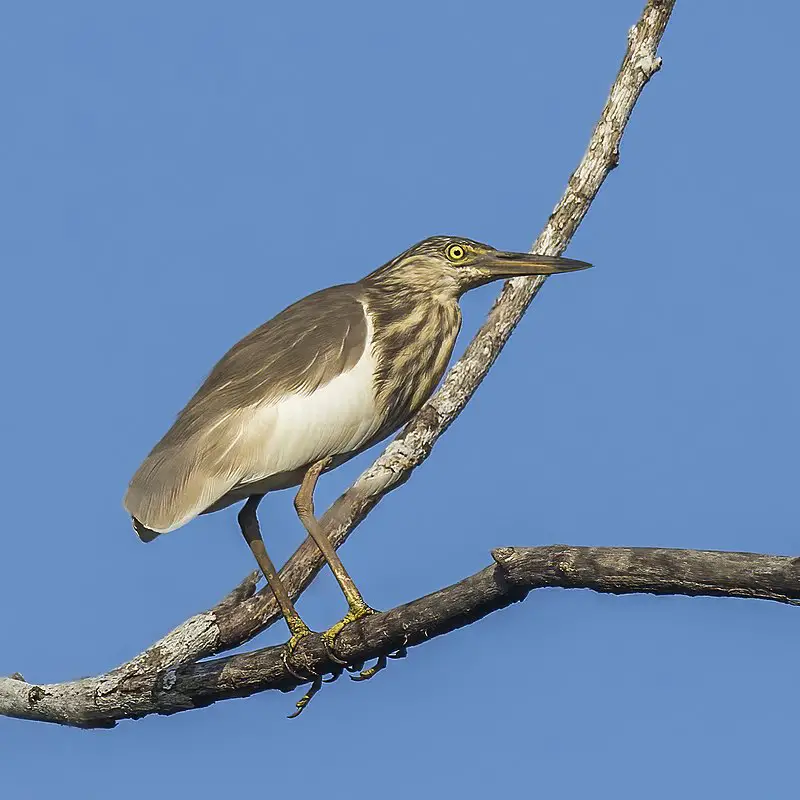
The Indian Pond Heron, also called Paddybird is a small heron found in the Old World. It breeds from southern Iran to India, Burma and Sri Lanka and can be seen near waterbodies or even around human habitations.
These birds are easily recognisable when they take off as their wings make a loud whistling sound due to its long flight feathers which are greyish-brown with white patches on them.
They feed mainly on fish but will eat other aquatic creatures such as frogs and insects too.
During breeding season they construct nests made of reeds close to water bodies where they lay 3–5 eggs at once.
The female incubates the eggs for about 19 days after which both parents share duties of feeding chicks until juveniles become independent enough to fly away.
Scientific classification:
| Kingdom | Animalia |
| Phylum | Chordata |
| Class | Aves |
| Order | Pelecaniformes |
| Family | Ardeidae |
| Genus | Ardeola |
| Species | A. grayii |
Also Featured In: Native Pakistani Birds, Gujarati Birds
7. Oriental Magpie-Robin
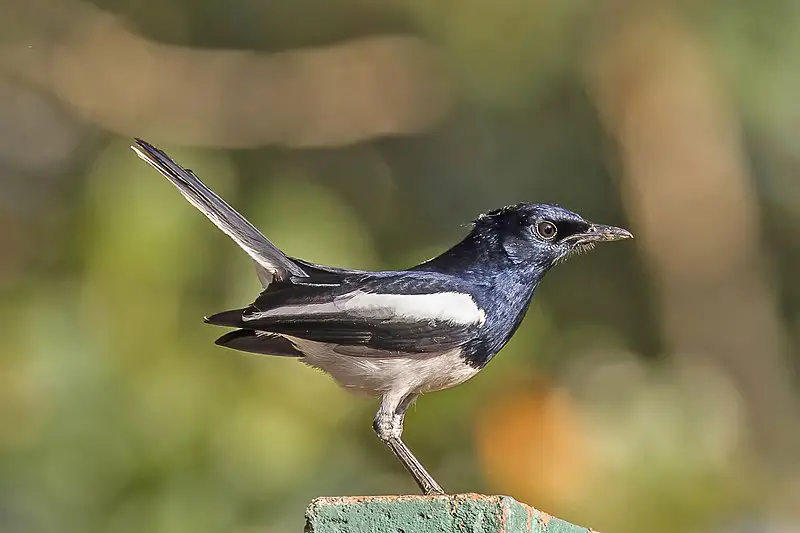
The Oriental magpie-robin is a beautiful passerine bird found across the Indian subcontinent and parts of Southeast Asia.
It can be easily identified by its black and white plumage, long tail that it holds upright while perched or foraging on the ground.
They are known to sing melodiously which makes them popular as cage birds in many countries.
These birds feed mainly on insects but also consume fruits, berries and nectar from flowers during certain times of the year.
Their population numbers have been declining due to destruction of their natural habitats like deforestation.
However, conservation efforts have seen some success in recent years with more areas being set aside for protection and preservation.
Scientific classification:
| Kingdom | Animalia |
| Phylum | Chordata |
| Class | Aves |
| Order | Passeriformes |
| Family | Muscicapidae |
| Genus | Copsychus |
| Species | C. saularis |
Also Featured In: Most Common Types of Bangladeshi Birds, Hong Kong Birds You Need to See
8. Common Myna
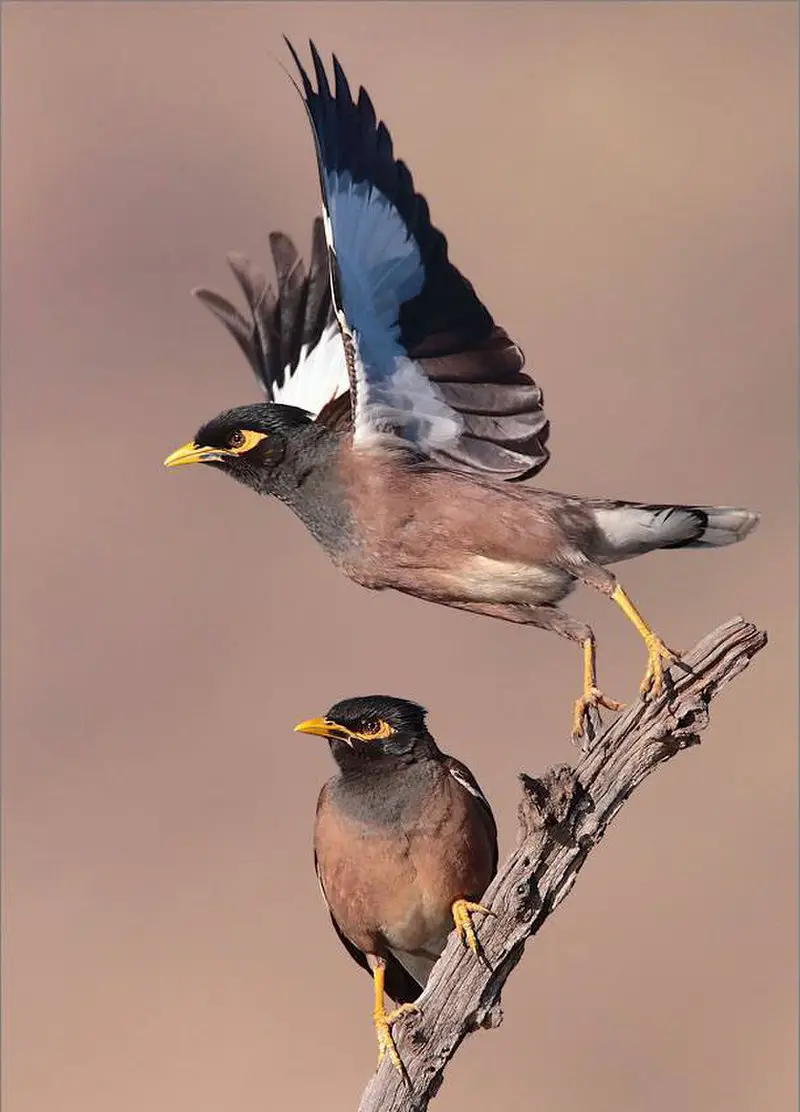
The Common myna is a bird native to Asia and belongs to the Sturnidae family. It has an omnivorous diet, strong territorial instinct and is well adapted to urban environments.
With its range increasing rapidly, it was declared one of the most invasive species by IUCN in 2000. Its distinctive features include black head with a yellow bill, brown body and white tips on wings & tail feathers.
The common myna communicates through loud clicking noises that can easily be heard from long distances in both rural as well as urban areas alike.
They are known for their intelligence; they mimic sounds such as human speech or other birds’ calls making them popular pets among households too.
Scientific classification:
| Kingdom | Animalia |
| Phylum | Chordata |
| Class | Aves |
| Order | Passeriformes |
| Family | Sturnidae |
| Genus | Acridotheres |
| Species | A. tristis |
Also Featured In: Birds of Kauai, Hawaii, Common Birds in the Cities
9. Brahminy Kite
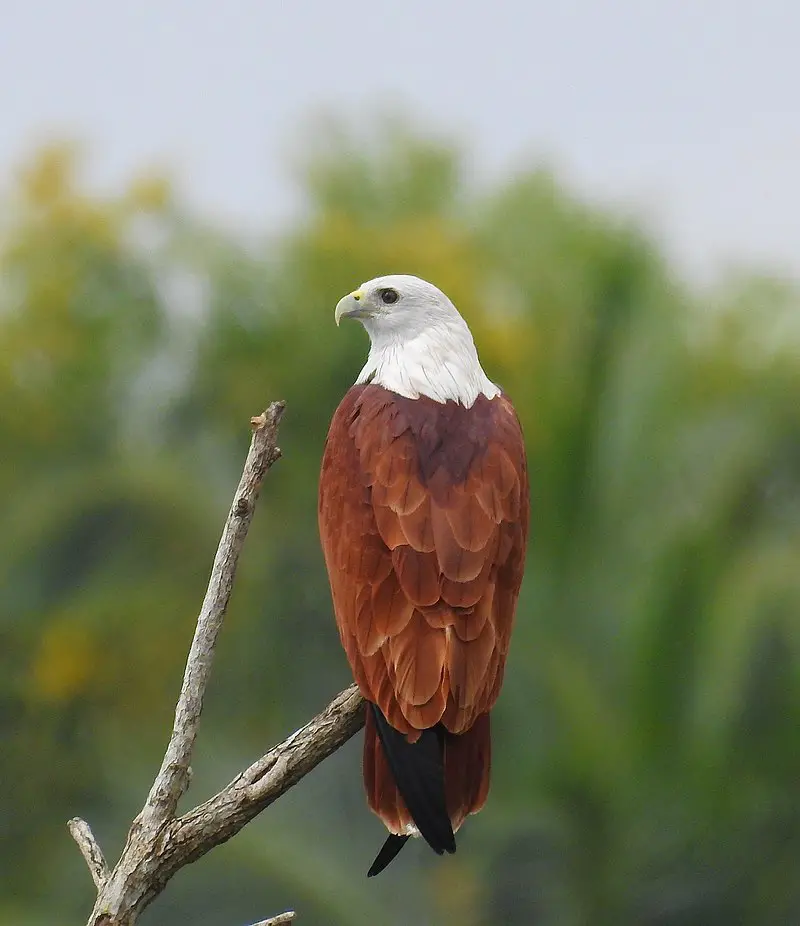
The Brahminy Kite is a majestic bird of prey native to the Indian subcontinent, Southeast Asia and Australia. It was formerly known as the red-backed sea eagle in Australia.
This medium-sized raptor has a distinctive white head with rufous brown feathers covering its body, making it easily recognisable from far away. The wingspan can reach up to 5 feet wide.
Brahminy kites are found mainly on coasts and inland wetlands where they feed mostly on dead fish or carrion left by other animals.
They also hunt for small mammals such as rodents or reptiles like lizards and snakes during dry spells when food sources become scarce.
These birds have adapted well over time and will even scavenge for food near picnic sites or urban areas if need be.
Overall these beautiful creatures are an important part of their local ecosystems which rely heavily upon them for keeping animal populations balanced through natural predation methods instead of manmade ones; this ensures that nature remains healthy so future generations may enjoy it too.
Scientific classification:
| Kingdom | Animalia |
| Phylum | Chordata |
| Class | Aves |
| Order | Accipitriformes |
| Family | Accipitridae |
| Genus | Haliastur |
| Species | H. indus |
Also Featured In: Birds that Live around Brisbane, Birds that Charles Darwin Studied
10. White-Breasted Waterhen
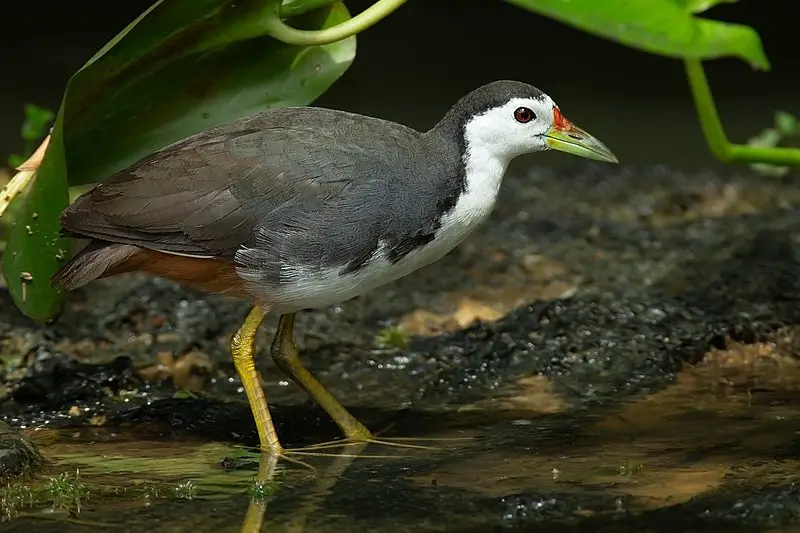
The White-breasted Waterhen is a stunning species of bird from South and Southeast Asia. It has a striking appearance, with its dark slaty plumage contrasted by the clean white of its face, breast and belly.
This bold waterbird can often be seen slowly walking around marshes or even drains near busy roads with its tail held upright in an unmistakable pose.
They are omnivores which feed on both plants and small animals such as insects and invertebrates.
The White-breasted Waterhen plays an important role in their ecosystems as they help to keep it balanced by consuming pests that could potentially cause damage to crops or other plant life if left unchecked.
Scientific classification:
| Kingdom | Animalia |
| Phylum | Chordata |
| Class | Aves |
| Order | Gruiformes |
| Family | Rallidae |
| Genus | Amaurornis |
| Species | A. phoenicurus |
Also Featured In: Birds that Commonly Found in Bali, Common Birds in Bangalore
11. Black Drongo

The Black Drongo is a small passerine bird of the Dicruridae family, commonly found in tropical southern Asia from Iran through India and Bangladesh to Indonesia.
It has an all black plumage and distinctive forked tail measuring 28 cm long. This omnivorous species feeds on insects such as flies, bees, beetles and moths; it also consumes fruit juices during summer months.
The nest can be built anywhere including open fields or near houses made up of twigs with a cup-shaped inner lining using grasses & hair filled with feathers & cobwebs.
During breeding season they are known to perform aerial acrobatics while chasing away any intruders who come too close to their nests.
Scientific classification:
| Kingdom | Animalia |
| Phylum | Chordata |
| Class | Aves |
| Order | Passeriformes |
| Family | Dicruridae |
| Genus | Dicrurus |
| Species | D. macrocercus |
Also Featured In: Asian Birds, Most Common Taiwan Birds
12. Common Tailorbird
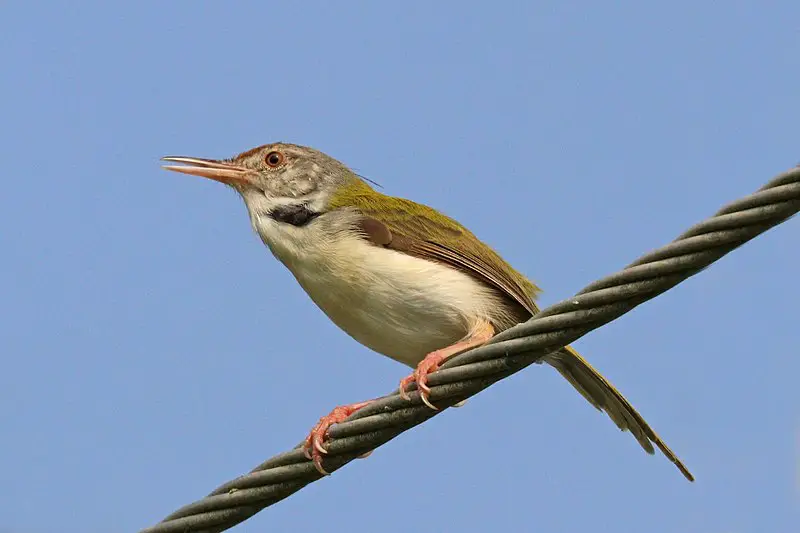
The Common Tailorbird is a songbird found across tropical Asia, popular for its unique nests made of leaves “sewn” together.
It was immortalized by Rudyard Kipling in his Jungle Book as Darzee and can often be seen in urban gardens.
Though shy birds that are usually hidden within vegetation, their loud calls give away their presence.
They are distinctive with a brownish plumage on the upperparts and paler gray underparts; white throats speckled black mark them out from other similar species.
They feed mainly on insects such as spiders, caterpillars and grasshoppers but will also eat fruit when available.
Breeding season begins around March or April with males singing to claim territories before beginning to weave intricate leafy structures for nesting sites – an amazing feat.
All in all these delightful little birds make wonderful additions to any garden setting – just remember not to get too close.
Scientific classification:
| Kingdom | Animalia |
| Phylum | Chordata |
| Class | Aves |
| Order | Passeriformes |
| Family | Cisticolidae |
| Genus | Orthotomus |
| Species | O. sutorius |
Also Featured In: Birds of Goa, Common Birds of Mumbai
13. Blue-Tailed Bee-Eater
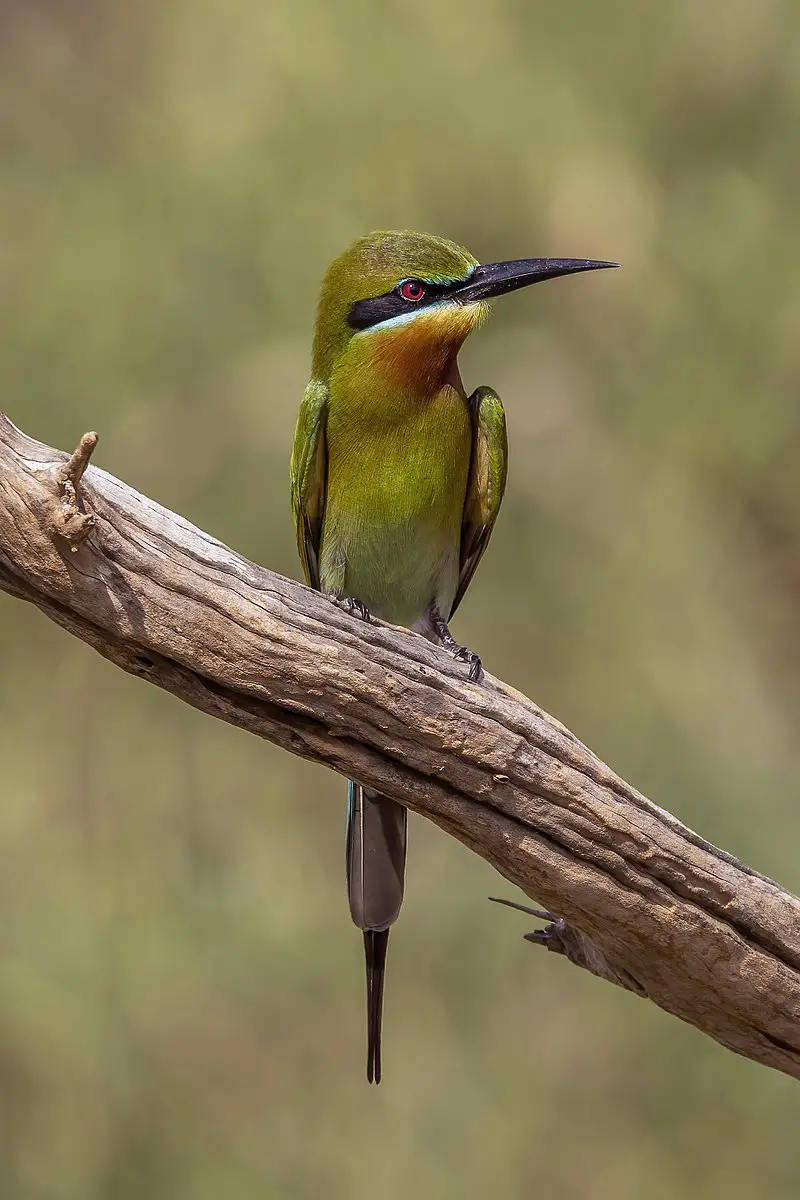
The Blue-tailed Bee-eater is a stunning bird found in South and Southeast Asia. This vibrant species has an iridescent blue tail, green back, yellow chest and white throat that stands out against the bright sky.
It feeds mainly on bees, wasps and other flying insects which it catches using its sharp beak while swooping through the air with remarkable agility.
The bee-eater typically nests by tunneling into loamy sand banks near rivers or streams to create burrows for their eggs.
During migration season they are often seen in large flocks soaring gracefully across the landscape seeking food sources before settling down in colonies during breeding season.
With its beautiful colours and graceful flight this impressive avian beauty captivates anyone lucky enough to see it up close.
Scientific classification:
| Kingdom | Animalia |
| Phylum | Chordata |
| Class | Aves |
| Order | Coraciiformes |
| Family | Meropidae |
| Genus | Merops |
| Species | M. philippinus |
Also Featured In: Birds of the Philippines, Common Philippines Birds
14. Zebra Dove
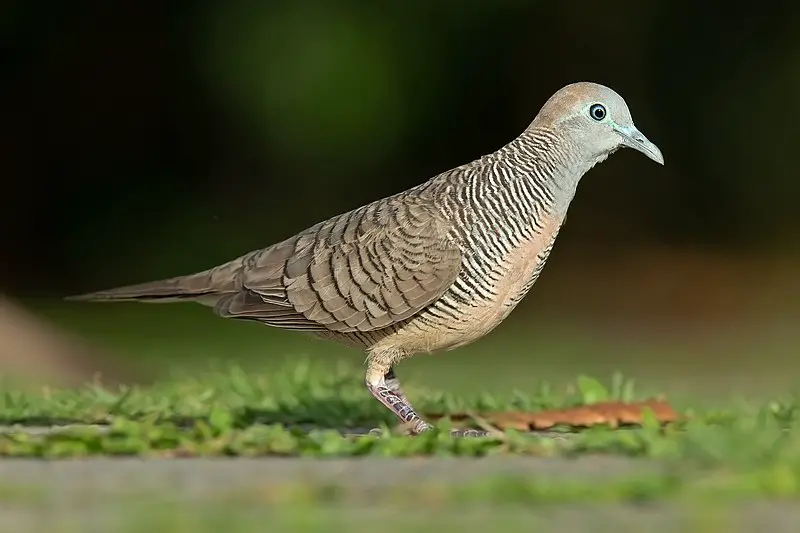
The Zebra Dove is a species of bird belonging to the Columbidae family. It can be found in Southeast Asia, and has predominantly brownish-grey feathers with black-and-white barring.
This dove stands out for its soft, pleasant cooing calls that sound like staccato notes when heard together. George Edwards first described it in 1743 as part of his English naturalist work on birds.
They are small animals with long tails, making them easily identifiable even from afar due to their distinct color patterning.
These doves prefer open woodlands or grassy areas near human settlements where they feed on seeds and insects while nesting close by but still far enough away from disturbance caused by humans or other animals who might disrupt their habitat.
The zebra dove is considered an important symbol among some Asian cultures representing love & beauty , reflecting how this little creature manages to capture people’s hearts wherever it goes.
Scientific classification:
| Kingdom | Animalia |
| Phylum | Chordata |
| Class | Aves |
| Order | Columbiformes |
| Family | Columbidae |
| Genus | Geopelia |
| Species | G. striata |
Also Featured In: Hawaii Big Island Birds You Should Know, White Oahu Birds
15. Pink-Necked Green Pigeon
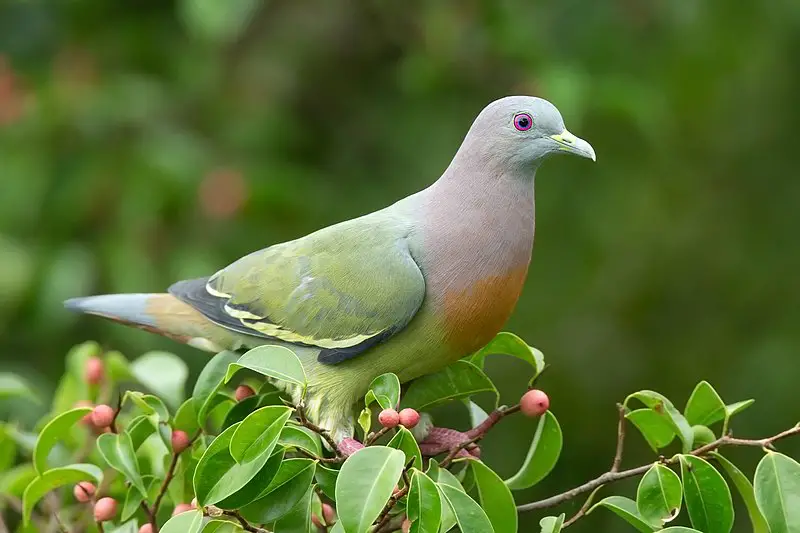
The Pink-necked green pigeon is a beautiful bird of the Columbidae family, native to Southeast Asia. Its body is mainly covered with emerald feathers and only the male has an eye-catching pink neck.
It can be found from Myanmar and Vietnam down to Indonesia and even in parts of Philippines, where it’s known as “punay”.
This medium sized species loves feeding on fruits such as figs or guavas but also enjoys snacking on insects from time to time.
In its natural habitat, this colorful avian often nests high up in trees for better protection against predators.
All in all, the unique beauty of Pink-necked Green Pigeon makes it one truly remarkable bird.
Scientific classification:
| Kingdom | Animalia |
| Phylum | Chordata |
| Class | Aves |
| Order | Columbiformes |
| Family | Columbidae |
| Genus | Treron |
| Species | T. vernans |
Also Featured In: Samar Island Birds You Should Know, Birds That Live In Siquijor
16. Little Egret
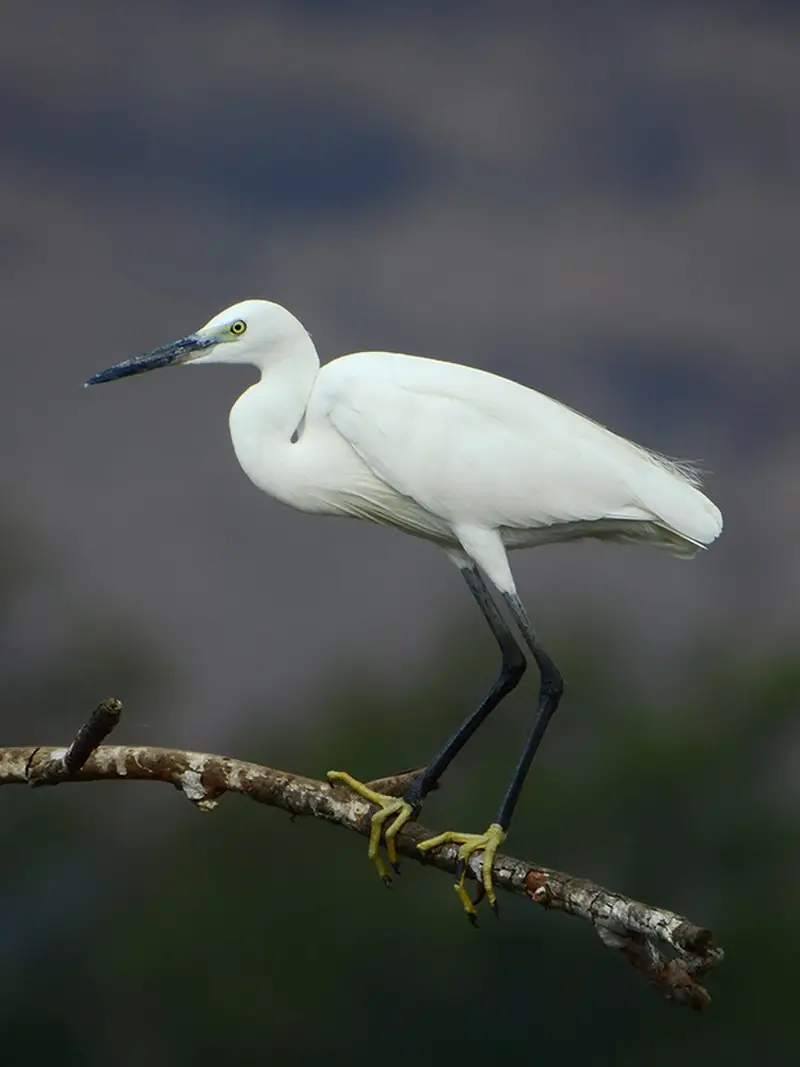
The Little Egret is a small white heron with sleek black beak, long black legs and in some cases yellow feet.
It can be found near aquatic areas where it feeds on molluscs, amphibians and insects while also occasionally feeding of land creatures such as lizards or rodents.
Breeding seasonally they make platform nests of sticks being built either by themselves or in colonies alongside other water birds.
They are widely distributed across the world from Europe to Africa, Asia to Australia making them an easily recognisable bird species often seen at waterside locations searching for their next meal.
Scientific classification:
| Kingdom | Animalia |
| Phylum | Chordata |
| Class | Aves |
| Order | Pelecaniformes |
| Family | Ardeidae |
| Genus | Egretta |
| Species | E. garzetta |
Also Featured In: Egyptian Birds, Swamps Birds You Should Know
17. Western Swamphen
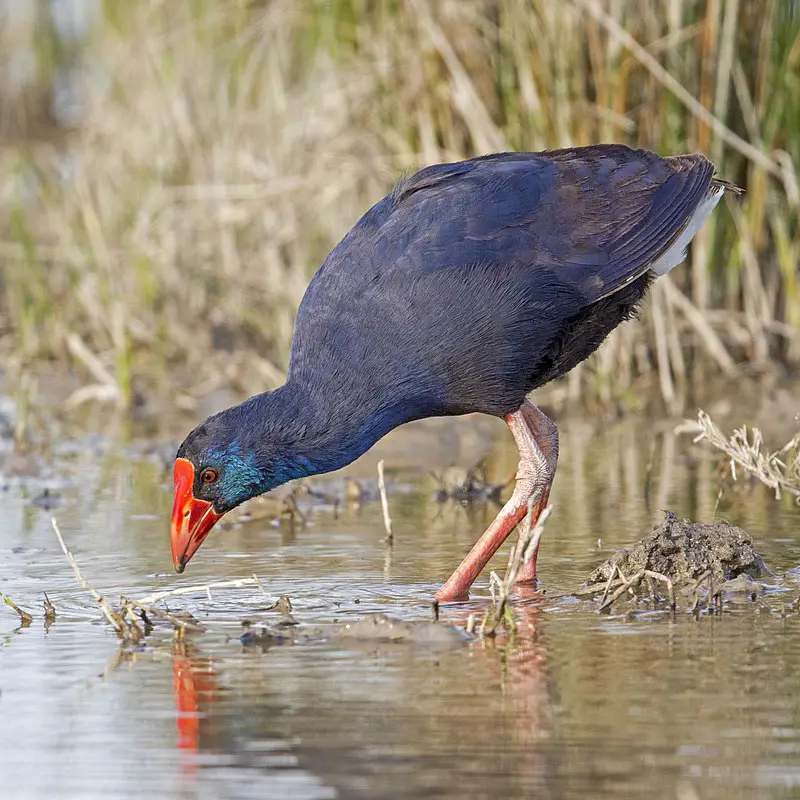
The Western Swamphen is a species of swamphen belonging to the Rallidae family. It has an impressive appearance: its bright plumage, long legs and large red bill make it easily recognizable.
Its French name ‘talève sultane’ gives it the nickname of ‘Sultana Bird’. It is typically chicken-sized but can be slightly larger in some areas.
The Western Swamphen’s diet consists mainly of aquatic vegetation such as pondweeds, watercress and rushes, along with small invertebrates like snails, insects and larvae.
Breeding usually occurs between spring and summer when mating pairs construct nests made from reed stems near shallow waters or marshlands which they defend fiercely against intruders.
The male also performs courtship displays by raising his feathers while bobbing up and down in front of potential mates to attract them into their territories for breeding purposes.
Scientific classification:
| Kingdom | Animalia |
| Phylum | Chordata |
| Class | Aves |
| Order | Gruiformes |
| Family | Rallidae |
| Genus | Porphyrio |
| Species | P. porphyrio |
Also Featured In: Birds of Morocco, Common Birds of Portugal
18. Black-Winged Stilt
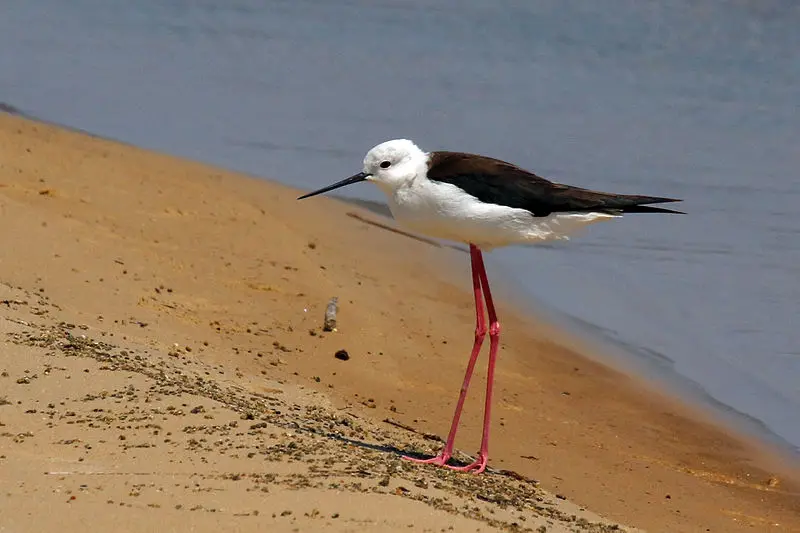
The Black-winged Stilt is a wading bird that belongs to the avocet and stilt family. It has very long legs, making it well adapted for standing in shallow water while searching for food like small fish and insects.
Its scientific name Himantopus himantopus can be applied either to one cosmopolitan species or the form found across Europe, Asia and Africa which equals its nominate group.
Generally this species is black on top with an all white underside but it also features red eyes with a thin white ring around each one as well as black wings flecked with white feathers towards the tips of their wings.
Scientific classification:
| Kingdom | Animalia |
| Phylum | Chordata |
| Class | Aves |
| Order | Charadriiformes |
| Family | Recurvirostridae |
| Genus | Himantopus |
| Species | H. himantopus |
Also Featured In: Birds of Senegal, Turkey Birds You Should Know
19. Purple Heron
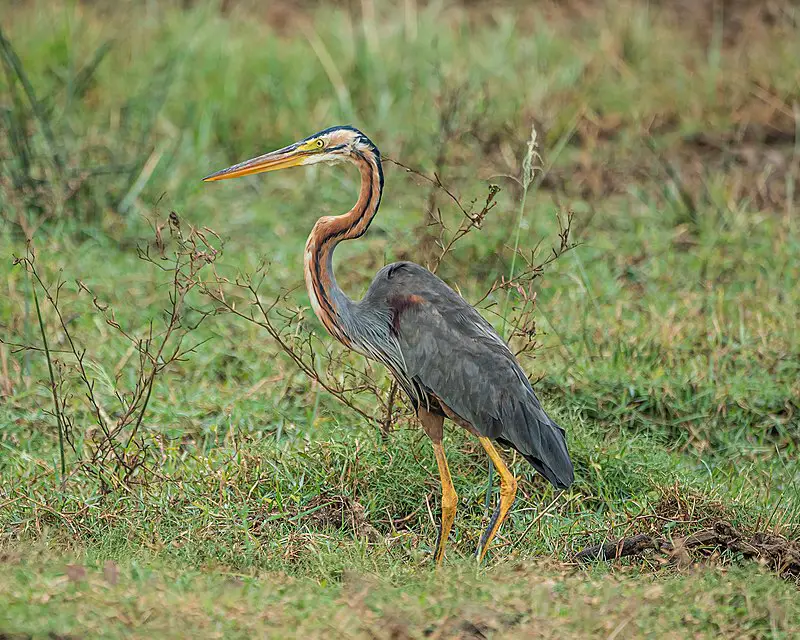
The Purple Heron is a majestic wading bird from the heron family which can be found in Africa, central and southern Europe, as well as southern and eastern Asia.
It has an impressive wingspan of up to 1.2 meters and its plumage usually ranges from grey-blue to purple on its back with brown streaks on it’s chest.
This species breeds during summer months before migrating for winter habitats where they feed mainly on fish or frogs near wetlands or rivers.
The scientific name Ardea purpureus originates from Latin words meaning ‘heron’ and ‘coloured purple’ respectively – referring to this bird’s beautiful colouration.
Scientific classification:
| Kingdom | Animalia |
| Phylum | Chordata |
| Class | Aves |
| Order | Pelecaniformes |
| Family | Ardeidae |
| Genus | Ardea |
| Species | A. purpurea |
Also Featured In: Most Beautiful birds of Greece, Common Serbian Birds
20. Black-Crowned Night Heron
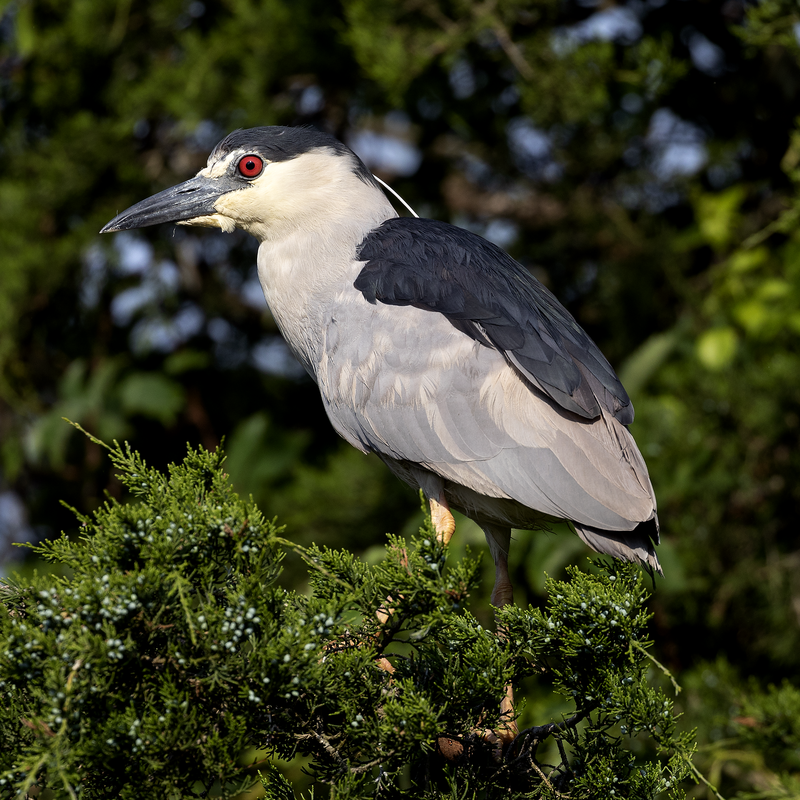
The Black-crowned night heron (Nycticorax nycticorax) is a medium-sized bird found in various parts of the world, including Europe, Asia and North and South America.
It has black crowns on its head with white feathers underneath. Its wings are greyish brown while its underparts are mostly white.
This species can be seen foraging near shallow water or along coastlines during dusk or dawn as it hunts small fish, amphibians and crustaceans.
They also feed on insects such as grasshoppers and beetles which they find in meadows close to freshwater bodies like lakes or ponds where they breed during springtime making nests using twigs lined with reeds and leaves near these waterside habitats.
In Australasia, this species hybridizes with the nankeen night heron that inhabits those areas instead; however both populations remain distinct from each other despite their overlap range regions.
Scientific classification:
| Kingdom | Animalia |
| Phylum | Chordata |
| Class | Aves |
| Order | Pelecaniformes |
| Family | Ardeidae |
| Genus | Nycticorax |
| Species | N. nycticorax |
Also Featured In: Common Birds Found in Switzerland, Flight Birds You Should Know
21. Great-Billed Heron
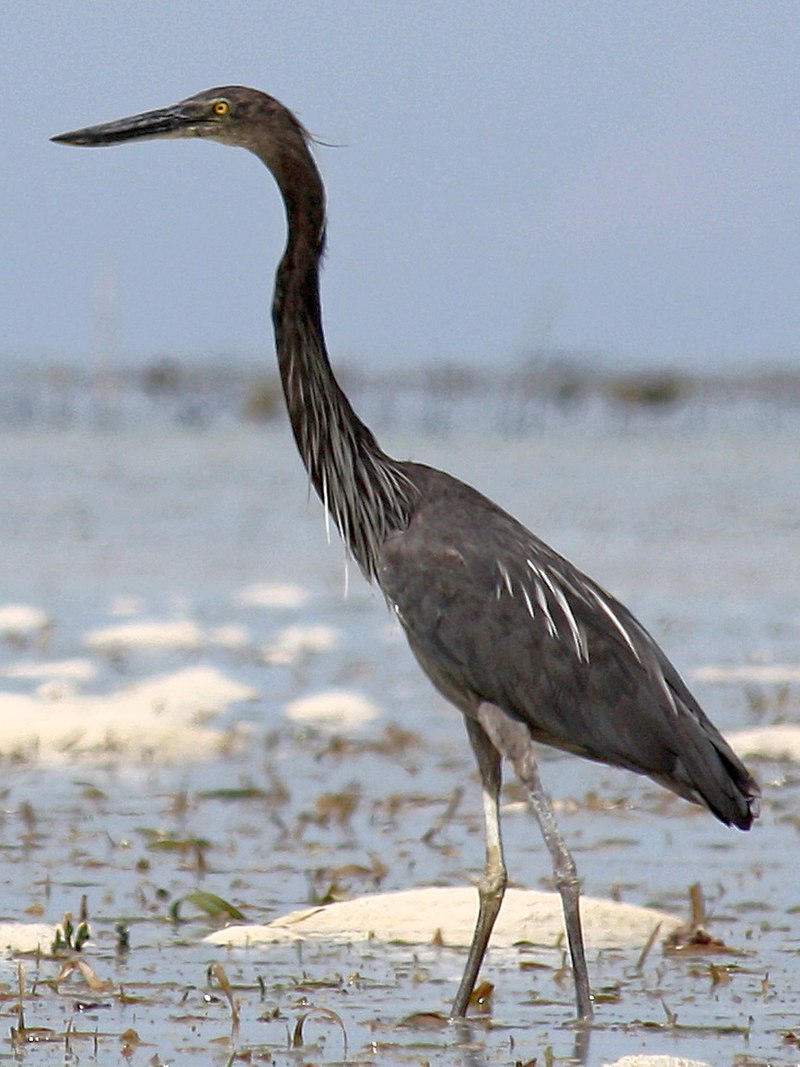
The Great-billed Heron is a majestic bird of the heron family found in Southeast Asia, Papua New Guinea and Australia.
Standing at an impressive 115cm tall and weighing up to 2.6kg, this magnificent creature is larger than the Purple Heron with which it shares many similarities including its dark grey plumage above and white feathers below its wings.
Its distinguishing feature however are its huge yellow bill as well as large black legs ending in webbed feet that allow for easy movement through shallow water while hunting prey such as fish or frogs.
A formidable hunter during daylight hours but also known to be quite vocal at night time too.
Scientific classification:
| Kingdom | Animalia |
| Phylum | Chordata |
| Class | Aves |
| Order | Pelecaniformes |
| Family | Ardeidae |
| Genus | Ardea |
| Species | A. sumatrana |
Also Featured In: Herons Species, Native Birds Of Mackay
22. Brown-Winged Kingfisher
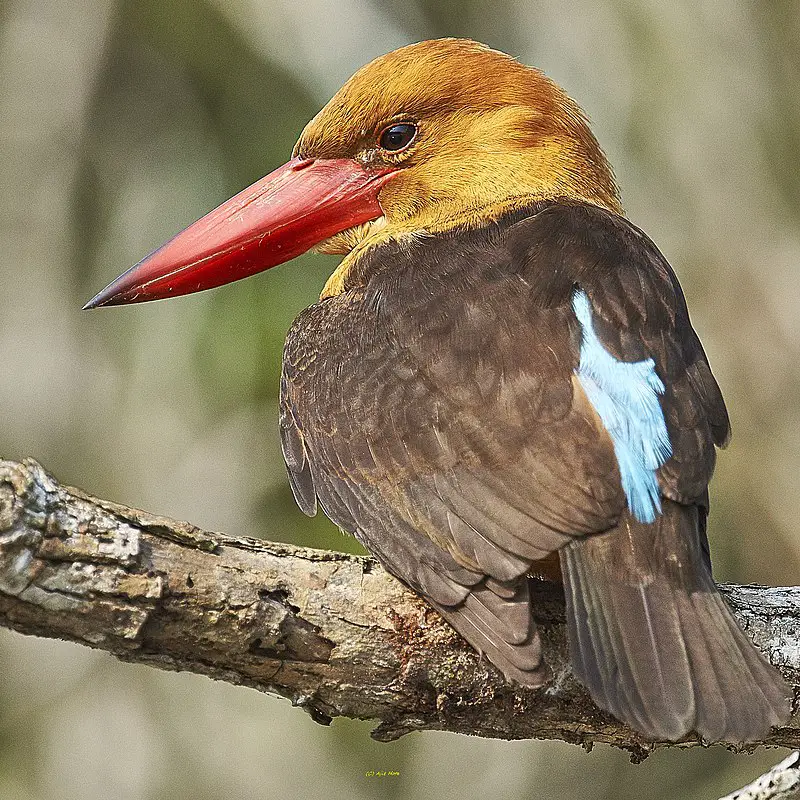
The Brown-winged Kingfisher is a beautiful bird found along the northern and eastern coasts of the Bay of Bengal. It inhabits Bangladesh, India, Malaysia, Myanmar and Thailand.
In India it mainly inhabits the Sundarbans region but has also been spotted near Chilka lake.
This species enjoys living in wetland habitats such as marshes, mangrove forests and open woodland areas with nearby water sources for hunting fish or insects.
With its distinct brown wings on a white body combined with bright blue markings around its head this kingfisher stands out from other birds in its range perfectly blending into forest settings while remaining visible to humans due to its vibrant colours.
Scientific classification:
| Kingdom | Animalia |
| Phylum | Chordata |
| Class | Aves |
| Order | Coraciiformes |
| Family | Alcedinidae |
| Subfamily | Halcyoninae |
| Genus | Pelargopsis |
| Species | P. amauroptera |
Also Featured In: Kingfishers Species,
23. Little Cormorant
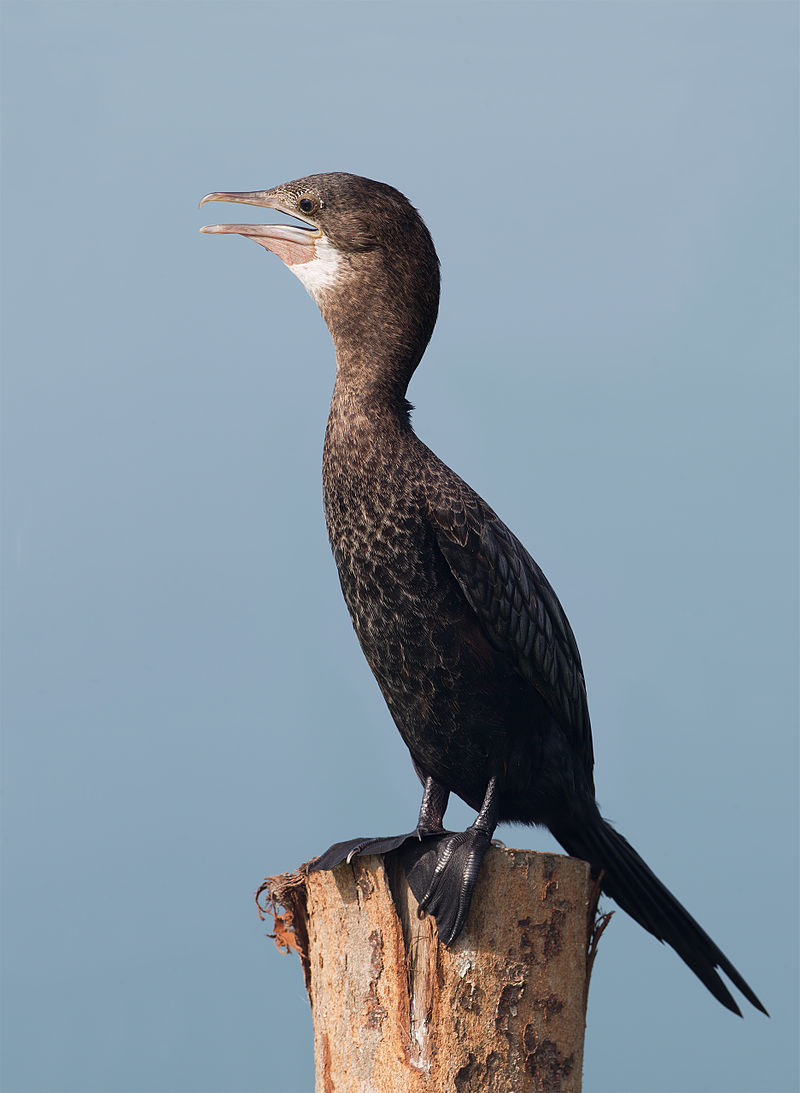
The Little Cormorant is a small yet distinctive member of the cormorant family. It has a shorter beak and lacks the peaked head seen in its relative, the Indian Cormorant.
This bird can be found across much of India, as well as extending east down to Java – where it’s sometimes called Javanese Cormorant.
These birds are usually solitary or travel in loose flocks while they search for food around lowland freshwater bodies like lakes and rivers.
They mostly eat fish but will occasionally feed on amphibians, invertebrates or crustaceans too.
The Little Cormorants’ plumage is generally dark grey with white patches on their wings which makes them stand out against other seabirds when flying high above water surfaces searching for prey below.
Scientific classification:
| Kingdom | Animalia |
| Phylum | Chordata |
| Class | Aves |
| Order | Suliformes |
| Family | Phalacrocoracidae |
| Genus | Microcarbo |
| Species | M. niger |
Also Featured In: Cormorant Species,
24. Banded Bay Cuckoo
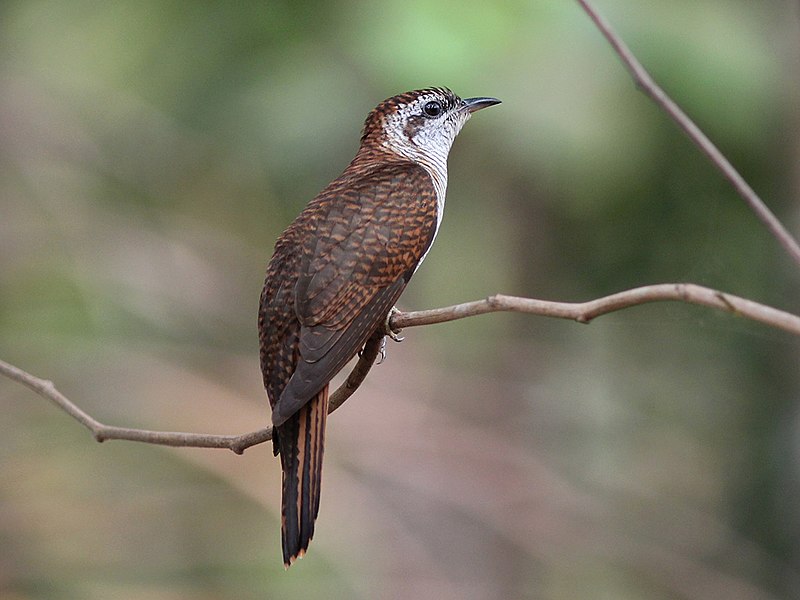
The Banded bay cuckoo, also known as bay-banded cuckoo, is a small bird found in woodland areas in Indian subcontinent and Southeast Asia. Their round nostril is a distinguishing feature of the genus.
Usually, they inhabit well-wooded lower hills. During breeding season, males sing from exposed branches. The type of song can vary with the region.
With distinctive features such as their bay-banding characteristic, they stand out from other species of cuckoo birds.
Scientific classification:
| Kingdom | Animalia |
| Phylum | Chordata |
| Class | Aves |
| Order | Cuculiformes |
| Family | Cuculidae |
| Genus | Cacomantis |
| Species | C. sonneratii |